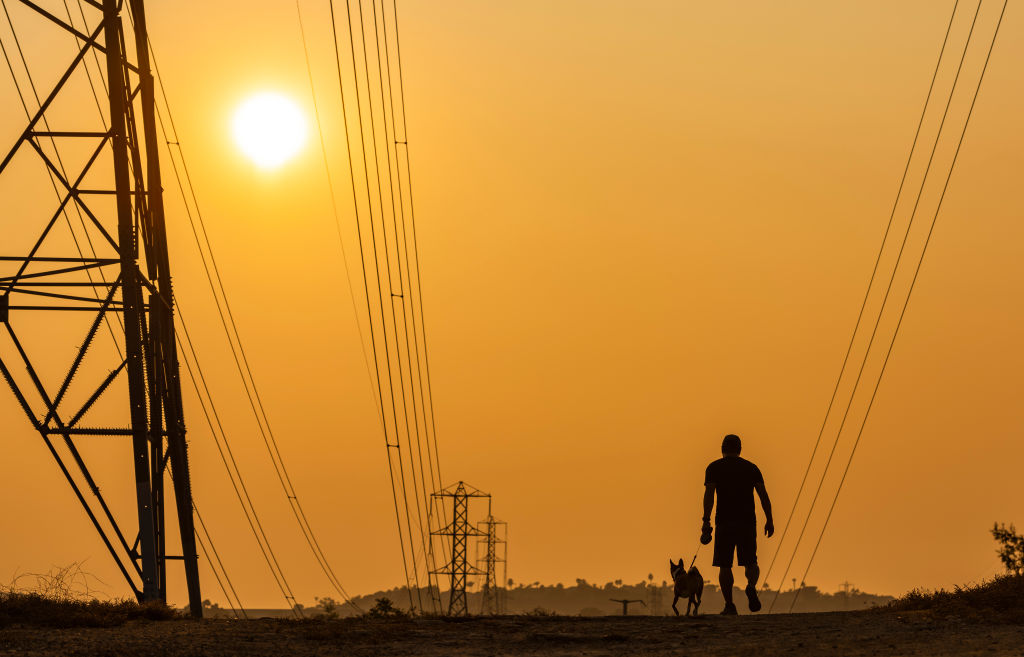It’s looking to be a hot summer for just about everyone in the United States. And there’s not much hope for rain to ease the heat. That’s according to the latest forecast from the National Oceanic and Atmospheric Administration’s climate scientists, released Thursday.
From June to August, unusually hot temperatures are expected across all 50 states, particularly the Southwest and Northeast. Much of the country is also expected to have a dry summer.
“Typically La Niña favors warmer than normal conditions over much of the West,” said NOAA meteorologist Johnna Infanti, referring to the climate pattern currently influencing weather in the U.S. It involves cooler sea surface temperatures and strong east-to-west winds in the Pacific Ocean, and it affects weather around the globe.
NOAA’s forecast offers little relief to the West, an area gripped by a 22-year-long megadrought, estimated to be the worst in 1,200 years. Scientists noted that California just had its driest January to April on record, with 3.25 inches of rain. That same period was the third-driest yet for Nevada and Utah. While forecasters expect these conditions to persist, the drought also appears poised to crawl east, with most of Iowa and eastern Texas likely to develop drought conditions this summer.
Extended drought has states worried, since it ratchets up their wildfire risk. Fires have already scorched New Mexico this month, weeks before the fire season peaks in June. Scott Overpeck, a meteorologist for the National Weather Service in Albuquerque, told the Guardian, “We have been seeing the writing on the wall, in the sense that we know with the drought conditions that it is going to be a rough season.”
Prospects for a hot, dry summer also have the people who operate electric grids concerned. This week, the North American Electric Reliability Corp., known as NERC, which monitors the grid across the U.S. and Canada, issued a sober assessment for the season, underscoring the challenges of keeping the power running against the backdrop of extreme weather driven by climate change. As temperatures spike, demand for electricity soars as people turn on their air conditioning. But with drought crippling hydropower generation, there’s less available power to meet demand.
That means an unreliable grid. When there isn’t enough power, operators set off outages, rolling blackouts, to avoid long-term damage to the grid. About two-thirds of the U.S. is vulnerable to a shaky supply this summer, according to the NERC assessment. During extreme events, like the Pacific Northwest’s heat wave last year, when temperatures set new records for three days straight, that can be lethal. Washington state alone estimates that 100 people died from the heat wave alone last summer, making it the deadliest weather-related event in state history.
The highest risks are in the upper Midwest and southern states directly east of the Mississippi River. There, NERC’s report said, retiring power plants, climbing demand, and low winds strain the power supply. Plus, an important transmission line running from Illinois to Arkansas that was damaged by a tornado last December is still out of service. Elsewhere, drought in Missouri River Basin states hampers the gas, coal, and nuclear plants that use river water to stay cool.
The East Coast will likely get an early taste of summer heat this weekend: A heat wave bringing the hottest temperatures since last August is expected to bake states from North Carolina to Maine. If that’s not enough to worry about, the grid watchdog identified two more hurdles this summer: supply chain woes that slow major transmission projects and the possibility of Russian cyberattacks.



